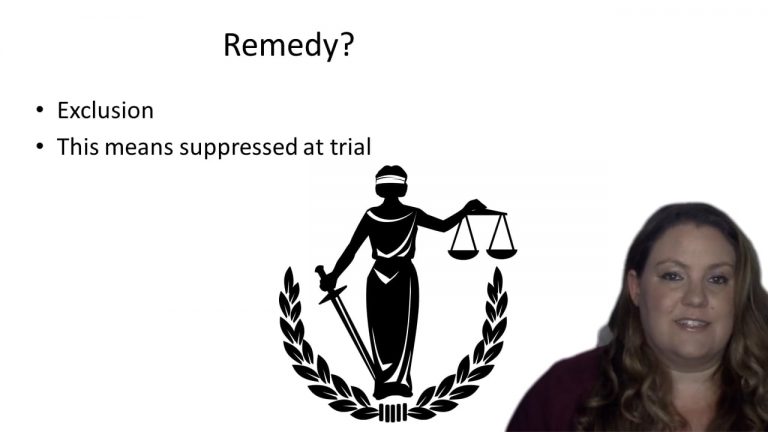SmartBrief
Confirm favorite deletion?
Criminal Procedure Keyed to Lee
California v. Greenwood
Citation:
486 U.S. 35 (1988)Facts
Greenwood (Defendant) was indicted for narcotics trafficking after police searched the garbage bags left at the curb outside his home, without a warrant. After officers received information that Greenwood may be involved in narcotics trafficking, they surveilled his home and asked the neighborhood’s regular trash collector to pick up the garbage bags that Greenwood left on the curb in front of his house and turn them over to the police. The officers searched through the trash and found items indicative of narcotics use, and then used this evidence to obtain a warrant to search his home. Greenwood argued that this evidence should be suppressed because the search violated the Fourth Amendment.
Only StudyBuddy Pro offers the complete Case Brief Anatomy*
Access the most important case brief elements for optimal case understanding.
*Case Brief Anatomy includes: Brief Prologue, Complete Case Brief, Brief Epilogue
- The Brief Prologue provides necessary case brief introductory information and includes:
Topic:
Identifies the topic of law and where this case fits within your course outline.Parties:
Identifies the cast of characters involved in the case.Procedural Posture & History:
Shares the case history with how lower courts have ruled on the matter.Case Key Terms, Acts, Doctrines, etc.:
A case specific Legal Term Dictionary.Case Doctrines, Acts, Statutes, Amendments and Treatises:
Identifies and Defines Legal Authority used in this case.
- The Case Brief is the complete case summarized and authored in the traditional Law School I.R.A.C. format. The Pro case brief includes:
Brief Facts:
A Synopsis of the Facts of the case.Rule of Law:
Identifies the Legal Principle the Court used in deciding the case.Facts:
What are the factual circumstances that gave rise to the civil or criminal case? What is the relationship of the Parties that are involved in the case.Issue(s):
Lists the Questions of Law that are raised by the Facts of the case.Holding:
Shares the Court's answer to the legal questions raised in the issue.Concurring / Dissenting Opinions:
Includes valuable concurring or dissenting opinions and their key points.Reasoning and Analysis:
Identifies the chain of argument(s) which led the judges to rule as they did.
- The Brief Prologue closes the case brief with important forward-looking discussion and includes:
Policy:
Identifies the Policy if any that has been established by the case.Court Direction:
Shares where the Court went from here for this case.
Topic Resources
Topic Outline

 15m 53s
15m 53s